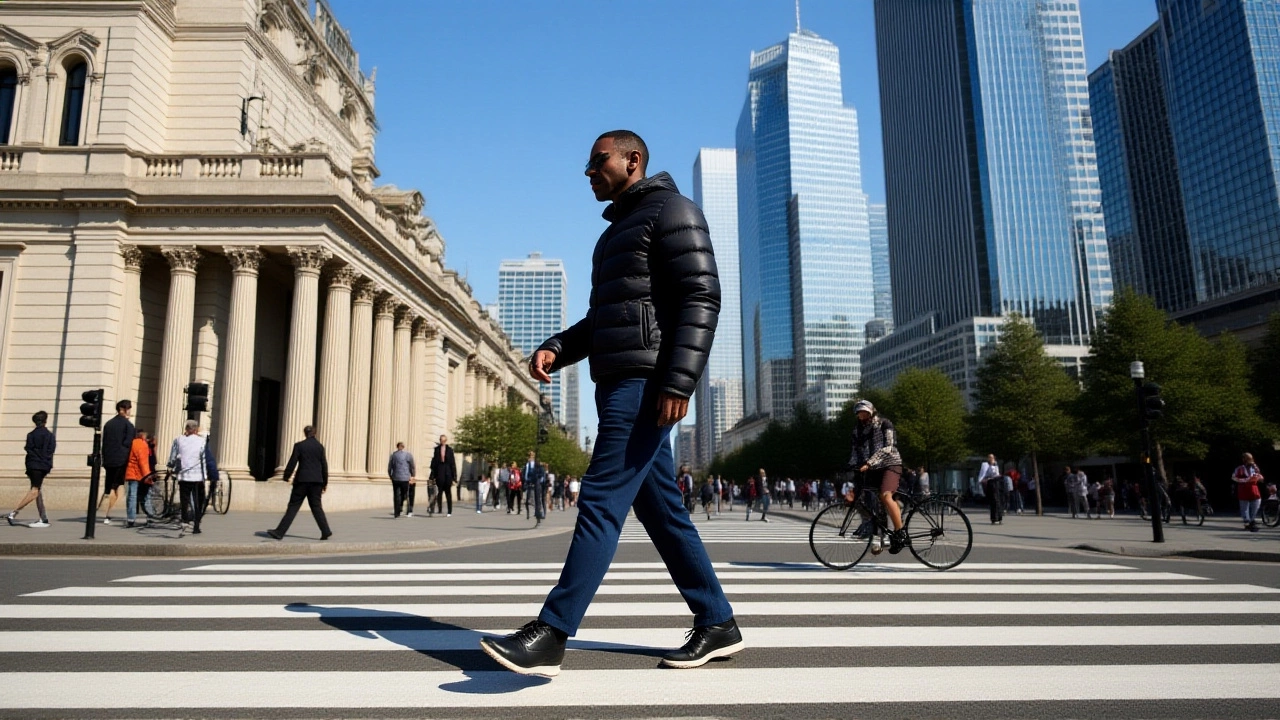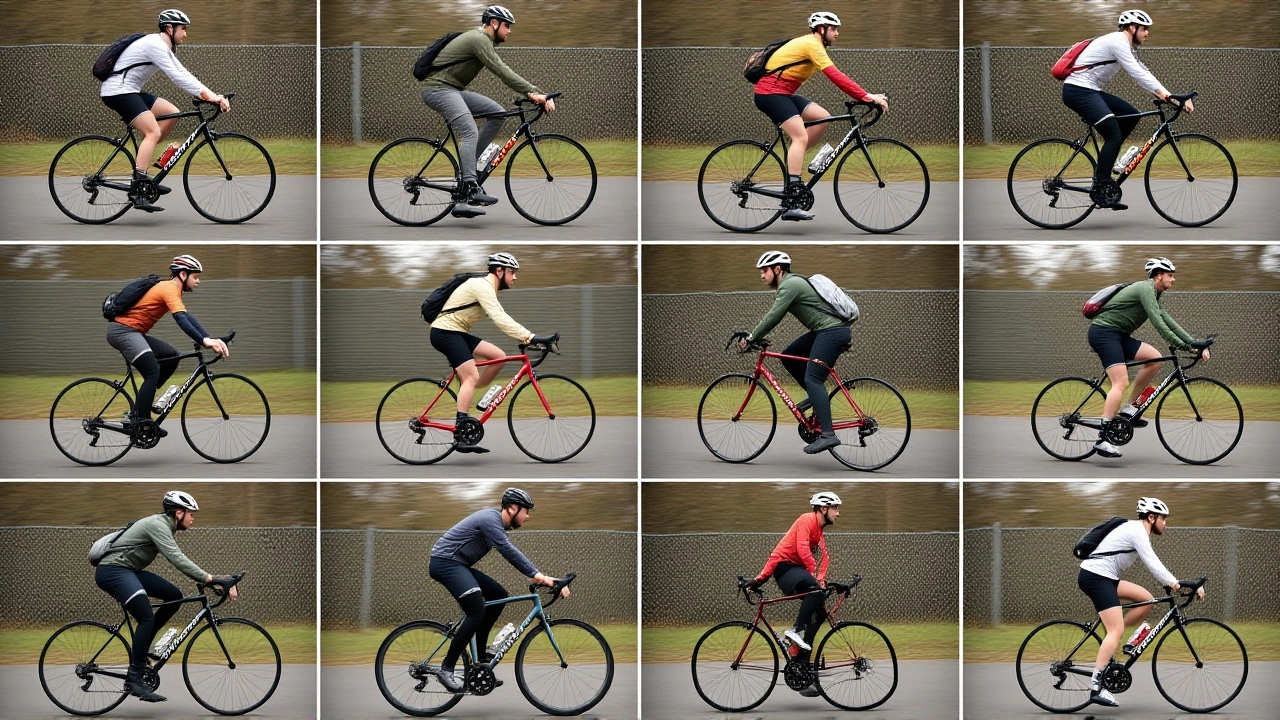On a mild November day in 2025, Jonathan Maus, publisher and editor of BikePortland, stood on the Springwater Corridor Trail in Portland, Oregon, watching a quiet revolution unfold. Bicycles of every shape, size, and origin rolled past — some with sleek carbon frames, others with sturdy aluminum, a few even with the classic steel of a 1970s Raleigh 3-Speed. What struck him wasn’t just the variety, but how much had changed since 2011. E-bikes? More common, yes — but still less than half of all bikes. Disc brakes? Now the norm, not the exception. And the bikes themselves? Mostly made in China now, not Japan or Chicago. This wasn’t just a day on a trail. It was a snapshot of urban mobility’s quiet transformation.
The Quiet Revolution on Two Wheels
Maus’s observations, published November 17, 2025, revealed startling shifts in cycling technology. Over half the bicycles he documented featured hydraulic disc brakes — a far cry from 2011, when such systems were nearly unheard of. Mechanical disc brakes were fading fast. Aluminum and carbon fiber frames had largely replaced steel, once the default material for commuter and recreational bikes. Clipless pedals, once reserved for serious riders, were now common among parents hauling kids and seniors running errands. And fenders? Almost gone. Not because people stopped riding in rain — but because the trail was dry that day, and the need for them had faded from collective memory. The real surprise? E-bikes. Despite years of media hype predicting an e-bike takeover, they made up less than 50% of the traffic. That’s not a failure — it’s a sign of maturity. People aren’t just buying e-bikes because they’re trendy. They’re buying them because they work: for commuting uphill, for carrying groceries, for aging riders who need a little help. But the majority still ride traditional bikes. That’s the quiet truth beneath the noise.A Trail That Connects More Than Neighborhoods
The Springwater Corridor Trail isn’t just a bike path. It’s a living artery. Spanning 21 miles from Portland to Gresham, it weaves through Tideman Johnson Nature Park, past Leach Botanical Garden, and alongside Johnson Creek — one of the last free-flowing urban streams in the region. Built in phases between 1996 and 2005, it’s paved, 10–12 feet wide, and shared by walkers, wheelchairs, joggers, and yes, horses east of I-205. It’s also one of the most heavily used multi-use trails in the Pacific Northwest. On any given weekend, you’ll see families with trailers, teens with skateboards, and retirees with panniers. The diversity isn’t accidental. As Maus noted, the trail accommodates “the diversity of PEOPLE shapes and sizes and the many goals they are pursuing.” That’s the point. Infrastructure shouldn’t cater to one kind of rider. It should serve everyone.
When Infrastructure Fails: Closures and Confusion
Even the best trails aren’t immune to disruption. In September 2025, Portland General Electric (PGE) shut down sections of the trail for five days to replace four aging transmission poles. Alex Cousins, PGE’s Community Engagement Manager, coordinated detours — one via SE Firwood Street, another through SE Rainbow Lane — but not without frustration from regular users. “We get it,” said one cyclist on a local forum. “But why can’t they schedule this for a weekend?” Worse was what happened in June. An Oregon Department of Transportation (ODOT) contractor blocked a section of the trail without permits, forcing riders onto gravel paths beside the pavement. A handwritten sign promised two more closures, including one on June 16. No apology. No notice. Just a detour carved out of convenience. Portland Parks & Recreation later issued a statement calling the action “unacceptable.” These aren’t isolated incidents. In January 2025, PGE closed the trail between SW 5th Street and SE Park Drive for five days. The pattern is clear: infrastructure is under strain, and maintenance is reactive, not planned.The Holy Grail: Separated Paths
Maus didn’t just document change — he pushed for more. “Separated paths are the holy grail of bike infrastructure,” he wrote. And he’s right. The Springwater Corridor works because it’s mostly free of cars. But what about the roads leading to it? Too many cyclists still face high-speed traffic on SE Division, SE Powell, and SE Stark. That’s where the real danger lies. The Portland Bureau of Transportation (PBOT) is trying. In 2024 and 2025, they installed 110 “Wait for Green” bike markings — those bold, painted arrows at intersections that tell drivers: stop for bikes. Another 40+ are pending funding. It’s a start. But what’s needed isn’t just paint. It’s physical separation. Concrete barriers. Protected intersections. Dedicated lanes. The Springwater Corridor proves it’s possible. Now, the city needs to replicate it on arterial streets.
What’s Next for Portland’s Bike Network?
The future isn’t just about more e-bikes or fancier frames. It’s about equity. About safety. About making sure a 70-year-old riding a Raleigh can get to the grocery store without fearing a truck turning right. About letting a single mom with two kids on a cargo bike ride to school without dodging traffic. Maus’s vision — “a situation where every highway railway has an adjacent Springwater or 205 path-esque trail” — isn’t utopian. It’s practical. Look at Copenhagen. Look at Amsterdam. Look at Portland’s own I-205 Bike Path, which runs parallel to a freeway and carries thousands daily. That’s the model. And it’s replicable. The next step? City council funding for protected corridors along SE 82nd, NE Glisan, and SW Macadam. The next step? Making sure every new development includes bike infrastructure — not as an afterthought, but as a requirement. The Springwater Corridor isn’t just a trail. It’s a blueprint.Frequently Asked Questions
Why are e-bikes less common than expected on the Springwater Corridor?
Despite media predictions, e-bikes made up less than half of observed bikes on the Springwater Corridor in November 2025. This suggests riders still value traditional bikes for short trips, fitness, or cost reasons. E-bikes are growing, but they’re supplementing — not replacing — conventional cycling. Many users report using them only for hills, heavy loads, or longer commutes, not daily errands.
How has bicycle manufacturing shifted since the 1980s?
In the 1970s–80s, bikes on Portland trails were often Japanese (Takashima, Miyata), European (Raleigh, Peugeot), or Chicago-made Schwinn. Today, over 70% of new bikes on the Springwater Corridor are made in China, with brands like Giant, Merida, and even unbranded models dominating. This shift reflects global supply chain changes and cost efficiency, though quality has improved dramatically — many Chinese-made bikes now outperform older Western models.
What caused the recent trail closures on the Springwater Corridor?
Two major disruptions occurred in 2025: Portland General Electric (PGE) closed sections in September for transmission pole replacements, and an ODOT contractor illegally blocked part of the trail in June without permits. Both caused confusion and unsafe detours. PGE provided advance notice and detours; ODOT did not. These incidents highlight the need for better coordination between utility companies, state agencies, and Portland Parks & Recreation.
Why are disc brakes so common now compared to 2011?
In 2011, disc brakes were rare on commuter bikes — most used rim brakes. By 2025, over half the bikes on the Springwater Corridor had hydraulic disc brakes, offering superior stopping power in wet or dusty conditions. This shift was driven by safety demands, better manufacturing, and lower prices. Riders, especially those hauling cargo or kids, now prioritize control over weight savings.
What’s the significance of the ‘Wait for Green’ bike markings?
PBOT installed 110 ‘Wait for Green’ markings across Portland between 2024 and 2025 — bold, painted arrows at intersections that signal drivers to yield to cyclists. These reduce right-turn crashes, which account for nearly 40% of bike-vehicle collisions in the city. With 40+ more pending funding, they’re a low-cost, high-impact tool to make streets safer without requiring full bike lanes — but they’re no substitute for protected infrastructure.
Why does Jonathan Maus call separated paths the ‘holy grail’?
Maus argues that separated paths — physically isolated from car traffic by barriers, curbs, or landscaping — are the only way to make cycling safe for children, seniors, and inexperienced riders. The Springwater Corridor proves it works: it’s busy, diverse, and accident-free compared to arterial roads. His vision is to extend this model to every major road in urban Portland, turning the city into a connected network of safe, car-free routes.
